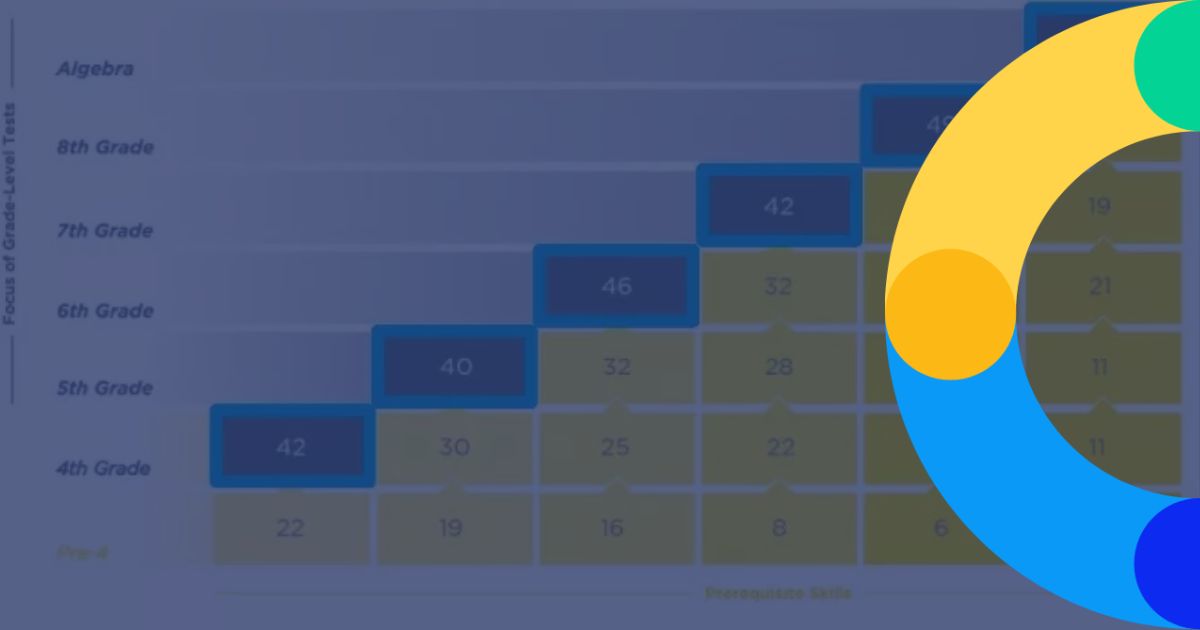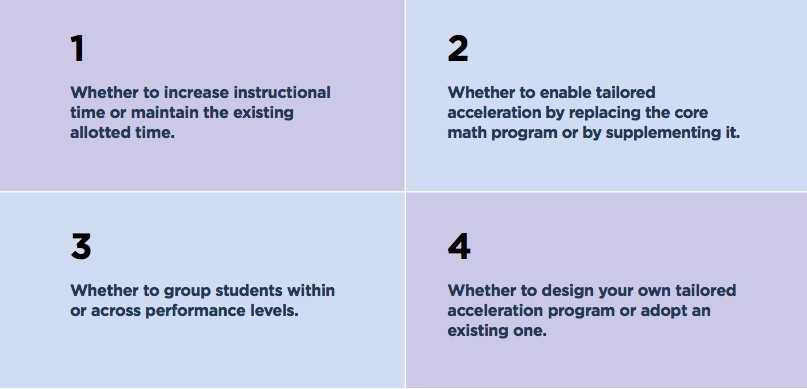Create a Learning Recovery Plan for Your Returning Students
August 9, 2021 |
As schools and districts make progress toward returning fully to in-person instruction, leaders must be prepared to confront a vexing challenge that could hamper their learning recovery efforts. It’s a problem that predates the coronavirus: summer learning loss has knocked students off track for decades due to inaccessibility to summer learning opportunities. The unfinished learning as a result of the pandemic has exacerbated these challenges in profound ways that we can’t yet grasp.
Conventional strategies, based on a one-size-fits-all traditional school model, will not suffice to meet these unprecedented challenges. Districts will need intentional learning recovery plans to meet this moment. We believe these plans must be comprehensive, innovative and student-centered.
In our first article, we introduced the idea of tailored acceleration, a strategy that can help students efficiently recover and build on their mathematical knowledge. The foundational principles of tailored acceleration include:
- High expectations
- A precise understanding of each student’s starting point
- A personalized plan that incorporates destination, timeframe, and program
- Regular assessments to measure progress
These insights are based on our more than 10 years of experience working with schools and districts to implement comprehensive and innovative personalized learning models. In addition, we present a comprehensive overview in our white paper, Solving the Iceberg Problem: Addressing Learning Loss in Middle School Math through Tailored Acceleration.
Six Components of a Learning Recovery Plan
Understanding Your Students’ Starting Points
The first step in any learning recovery plan must include precisely identifying the set of skills that each student will need to master to accelerate their learning. Skill maps, diagnostic tools, and an innovative assessment strategy are three building blocks that can help educators gauge their students’ starting points.
1. An underlying skill map or framework: A common, multi-grade skill map that articulates the relationships between different skills within and across different grade levels is an essential tool for tailored acceleration. (We have developed a mathematics skill map that incorporates the approximately 300 skills that are included in states’ math standards from grade five through Algebra 1). Thoughtful skill maps provide clear and consistent descriptions of the skills themselves so that teachers are aligned around an explicit definition of each one. They also can help to ensure that lesson plans, instructional resources, and assessments are all aligned around common understandings.
2. Diagnostic tools: Next, schools must precisely diagnose each student’s incoming levels of mastery to determine the focus of instruction and ensure that instructional time is not wasted re-teaching previously mastered concepts or teaching new concepts that students are highly unlikely to master given identified gaps in their predecessor knowledge. (Our free diagnostic assessment, Teach to One Roadmaps, generates individualized academic roadmaps for each student.)
3. Prioritization on a strategic mix of skills to get students back on track: Once schools have a clear understanding of each students’ learning recovery plan, they must prioritize an ambitious subset of concepts to be learned within the instructional time available. The concepts should be limited or confined by grade-level (pre-grade skills, on-grade skills, and even post-grade skills may be prioritized), and must be provided, in full transparency, as each student’s unique path to proficiency.
4. Regular assessments to measure progress: Schools should utilize interim assessments that are designed to capture learning gains that span multiple grade levels. Many of these adaptive assessments, including NWEA’s MAP and Curriculum Associates’ i-Ready, also publish linking studies that enable results to be statistically linked to performance on summative state tests. Assessment options to consider:
- Adaptive assessments: Assessments that span multiple grades and can adapt to student responses in order to give credit for learning gains that are outside of students’ enrolled grade level.
- Competency-based assessments: School success could be determined based on the ability for students to reliably demonstrate mastery of key academic skills and concepts throughout the school year, as opposed to a single statewide summative assessment.
- Curriculum-embedded assessments: Innovative learning models and next generation curriculum offerings can ultimately embed reliable assessments that, with appropriate controls and comparability capabilities, could one day replace annual summative assessment with far greater levels of precision.
5. Meaningful parent engagement: While an approach focused on meeting the strengths and needs of each student can better accelerate progress, it will nonetheless differ from what parents are accustomed to seeing. Therefore, before planning any program, schools may want to get feedback from parents on which approaches for addressing learning loss best fit the school community, followed by clear communication with parents about the approaches the school has adopted and its implications. Providing accessible resources that enable parents to support their child’s progress can further enable acceleration.
6. Incorporating key program design choices: An effective learning recovery plan must account for several program design choices. You’ll want to consider whether to:
- increase instructional time or maintain the existing allotted time,
- enable tailored acceleration by replacing the core math program or by supplementing it,
- group students within or across performance levels, and
- design your own tailored acceleration program or adopt an existing one.

In terms of program options, you can consider:
- creating home-grown programs (mastery trackers, assignment packets, continual regrouping),
- leverage educational products that can supplement core, age-graded instruction (in-school or out-of-school), or
- leverage innovative learning models that can supplement or replace core, age-graded instruction.
What’s Next for Districts?
We believe there has never been a more opportune moment to make a shift toward tailored acceleration. The confluence of several forces—a widespread recognition of learning loss, the infusion of educational technology brought upon by school closures, the uncertainty around the future of state assessment and accountability policy, and the necessity of tending to students’ social and emotional development—suggests now is the time to try new ways to meet students where they are and ensure they reach proficiency and beyond.
Book a Consultation
If you’re interested in learning more about the Tailored Acceleration strategy and how you can incorporate it into your district’s learning recovery plan, schedule a free consultation meeting with our partnerships team.